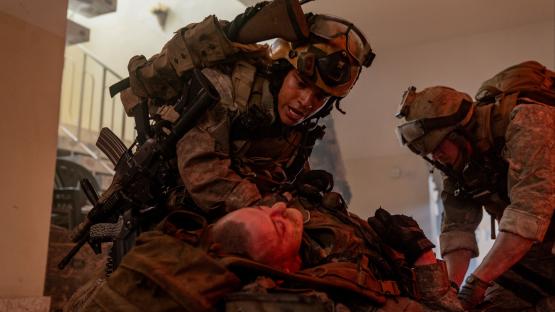After more than a year of pandemic precautions, a changing virus is making it harder for people to avoid infection.
Increasingly, experts warn of the need to double down on safety measures to ward off more highly transmissible COVID-19 variants, like B.1.1.7, first detected in the U.K.
“Small interactions, smaller breaches in your protocols of social distancing and wearing masks do matter,”; says Dr. Anne Rimoin, an epidemiologist at the UCLA School of Public Health.
Read more: COVID-19 has changed. Should our outdoor behaviour shift too?
The B.1.1.7 variant is estimated to be 50 to 65 per cent more transmissible than the virus we've been used to. The variant is driving the rapid surge in cases in places like Ontario, Quebec and Michigan.
The P.1 variant, first detected in Brazil, is thought to be up to 2.5 times more transmissible, and has been blamed for outbreaks in British Columbia and Alberta, as well as the devastating situation in the country where it first emerged.
“Variants definitely do increase the risk, and they increase the risk for all age groups,”; says Dr. Tom Frieden, former director of the U.S. Centers for Disease Control and Prevention. “It's clear that the variants are both more transmissible and also, in some cases, more deadly.”
That can make places like grocery stores, indoor dining rooms, and workplaces riskier than they were before. An outbreak of several dozen cases in a North Bay, Ont., apartment building was linked to the rapid spread of variants. So were several of the cases detected in an Amazon warehouse in Brampton, Ont.
While mutations may have made the virus more transmissible, they haven’t changed the basic method by which it spreads.
Existing measures like masks, distancing and ventilation are still effective. It’s simply more important to get them right.
“I don't think it's as much a need to change our precautions as much as it is making sure that we continue them,”; says Dr. Lisa Maragakis, senior director of infection prevention at Johns Hopkins.
Masks are one area where experts have urged improvement, suggesting higher-quality masks, or even double-masking.
Some, like Frieden, now encourage the use of medical-grade N95, KN95 or KF94 masks in places where there is no longer a shortage for medical professionals. “People at higher risk may well want to use N95 masks for certain, high-risk indoor activities,” he says.
“The quality of masks is very important,”; Maragakis agrees. She stops short of recommending medical-grade masks for everyday use, but points out “it's important that the mask fit properly, cover the nose and mouth and be made of tightly woven material.”;
The variants have emerged at what many people assumed would be the end of the pandemic — a time when vaccinations are accelerating and some jurisdictions have begun to relax restrictions.
We’ve let down our guard, and grown weary, right when we need to be more careful than ever.
“The COVID-19 variants have the potential to be much worse,”; says Dr. Naheed Dosani, a palliative care physician in Toronto. “We need to shift the public health messaging to be one that talks about how the COVID-19 variants are different from the original strain.”;
Even in the United States, where 110 million adults have received at least one dose of vaccine, the pace of vaccination is not enough to blunt the spread of the virus.
Read more: Will the more deadly COVID-19 variants ruin our summer? Here's what experts are saying
The variants, which are now dominant, are winning the race.
“Eventually the vaccines are going to win,”; Rimoin says. “In the interim period, we still have a lot of opportunity for spread.”;
That includes spread to the recently vaccinated, who need to be cautious of the high levels of virus still circulating, despite the highly effective nature of the vaccines.
“We still could get infected and be part of a transmission chain, even though it's less likely than if you are not vaccinated,”; Rimoin says.
Frieden points out that the rapidly spreading variants also increase the chances of further mutations that could change the long-term outlook for controlling COVID.
“As more people get vaccinated, the selective evolutionary pressure on the virus to develop variants that may evade vaccines will increase,” he says, hinting the virus could escape our current ability to contain it.
The bottom line: a changing virus means we need to change too and be more vigilant — at least until the vaccines can suppress the COVID-19 wave.




